DECLARATION OF INDEPENDENCE]. In Congress, July 4, 1776. The Unanimous Declaration of the Thirteen United States of America.When in the Course of human events... . Washington: [Imprint at top:] Engraved by W.I. Stone, for the Dep t. of State, by Order of J.Q. Adams, Scr y of State. July 4, 1823. Folio broadside (29 5/16 x 25¾ in.), PRINTED ON PAPER, without folds, margins with chipping and small losses, especially at corners, clean vertical tear at bottom crossing one group of Signers' signatures (but without loss), tiny patch near Thomas Lynch's signature, neat repairs along margins, professionally laid down on acid-free backing, traces of old stitch-holes along top and bottom margins. "WHEN IN THE COURSE OF HUMAN EVENTS...": ONE OF ONLY TWO RECORDED TRIAL PAPER PROOFS OF THE STONE-ENGRAVED DECLARATION OF INDEPENDENCE The second recorded example of a paper-printed proof of the finely-executed 1823 Stone facsimile of the engrossed Declaration of Independence. The first such paper proof to be discovered was a copy that had descended directly in the family of the Mormon leader, Brigham Young (sold Christie's, Los Angeles, 31 January 2002, lot 2, $150,000). These two unusual paper printings apparently comprise trial proofs struck from the original plate, probably before Stone printed the main edition of 201 copies ordered by Congress in observance of the 50th anniversary of the Declaration. That edition, largely intended for presentation purposes, Congress stipulated must be printed on large sheets of fine-quality vellum. Laboriously prepared from individual whole sheets of fine calfskin, vellum was extremely expensive, and it is logical that, when proofing his engraving, Stone would pull proofs on heavy paper rather than on costly vellum. Stone's 1823 imprint, (engraved in very small letters at the top on either side of the words "In Congress") was carefully removed from the plate after the 201 vellum copies were printed. (Later, Stone's original plate--retained by the Department of State--was re-used by Peter Force in 1848 to print copies on thin rice paper for inclusion in his American Archives ; these had no imprint at the top, but carried instead an abbreviated imprint ("J.W.Stone sc. Washington") added in the blank area at lower left. Stone's meticulously traced and finely engraved facsimile of this, America's founding manifesto, is the most accurate of existing facsimiles and the only one officially authorized by Congress. In 1820 --roughly forty years after the Declaration of Independence was adopted by Congress and signed in Philadelphia by 56 delegates--Secretary of State John Quincy Adams, commissioned William J. Stone to execute a full-scale facsimile of the Declaration which itself had badly deteriorated in the intervening years. It reportedly took Stone three full years to complete his engraving on a large copperplate. According to the most authoritative census, in 1991, there were some 31 surviving parchment copies, of which 19 were in institutions. The existence of Stone's paper proofs--two of which are now known to survive--is a significant addition to this group of fine facsimiles which so carefully reproduce the fading and fragile original document displayed in the National Archives. See John Bidwell, "Some Broadside Editions of the Declaration of Independence," in Proceedings of the American Antiquarian Society, vol.98, no 7; W.R. Coleman, "Counting the Stones-A Census of the Stone Facsimiles of the Declaration of Independence," in Manuscripts , vol.43 (1991), no.2, pp.97-105.
DECLARATION OF INDEPENDENCE]. In Congress, July 4, 1776. The Unanimous Declaration of the Thirteen United States of America.When in the Course of human events... . Washington: [Imprint at top:] Engraved by W.I. Stone, for the Dep t. of State, by Order of J.Q. Adams, Scr y of State. July 4, 1823. Folio broadside (29 5/16 x 25¾ in.), PRINTED ON PAPER, without folds, margins with chipping and small losses, especially at corners, clean vertical tear at bottom crossing one group of Signers' signatures (but without loss), tiny patch near Thomas Lynch's signature, neat repairs along margins, professionally laid down on acid-free backing, traces of old stitch-holes along top and bottom margins. "WHEN IN THE COURSE OF HUMAN EVENTS...": ONE OF ONLY TWO RECORDED TRIAL PAPER PROOFS OF THE STONE-ENGRAVED DECLARATION OF INDEPENDENCE The second recorded example of a paper-printed proof of the finely-executed 1823 Stone facsimile of the engrossed Declaration of Independence. The first such paper proof to be discovered was a copy that had descended directly in the family of the Mormon leader, Brigham Young (sold Christie's, Los Angeles, 31 January 2002, lot 2, $150,000). These two unusual paper printings apparently comprise trial proofs struck from the original plate, probably before Stone printed the main edition of 201 copies ordered by Congress in observance of the 50th anniversary of the Declaration. That edition, largely intended for presentation purposes, Congress stipulated must be printed on large sheets of fine-quality vellum. Laboriously prepared from individual whole sheets of fine calfskin, vellum was extremely expensive, and it is logical that, when proofing his engraving, Stone would pull proofs on heavy paper rather than on costly vellum. Stone's 1823 imprint, (engraved in very small letters at the top on either side of the words "In Congress") was carefully removed from the plate after the 201 vellum copies were printed. (Later, Stone's original plate--retained by the Department of State--was re-used by Peter Force in 1848 to print copies on thin rice paper for inclusion in his American Archives ; these had no imprint at the top, but carried instead an abbreviated imprint ("J.W.Stone sc. Washington") added in the blank area at lower left. Stone's meticulously traced and finely engraved facsimile of this, America's founding manifesto, is the most accurate of existing facsimiles and the only one officially authorized by Congress. In 1820 --roughly forty years after the Declaration of Independence was adopted by Congress and signed in Philadelphia by 56 delegates--Secretary of State John Quincy Adams, commissioned William J. Stone to execute a full-scale facsimile of the Declaration which itself had badly deteriorated in the intervening years. It reportedly took Stone three full years to complete his engraving on a large copperplate. According to the most authoritative census, in 1991, there were some 31 surviving parchment copies, of which 19 were in institutions. The existence of Stone's paper proofs--two of which are now known to survive--is a significant addition to this group of fine facsimiles which so carefully reproduce the fading and fragile original document displayed in the National Archives. See John Bidwell, "Some Broadside Editions of the Declaration of Independence," in Proceedings of the American Antiquarian Society, vol.98, no 7; W.R. Coleman, "Counting the Stones-A Census of the Stone Facsimiles of the Declaration of Independence," in Manuscripts , vol.43 (1991), no.2, pp.97-105.
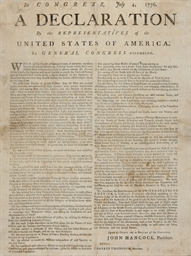
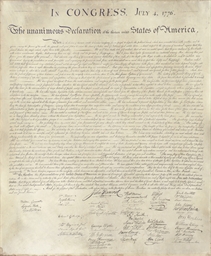
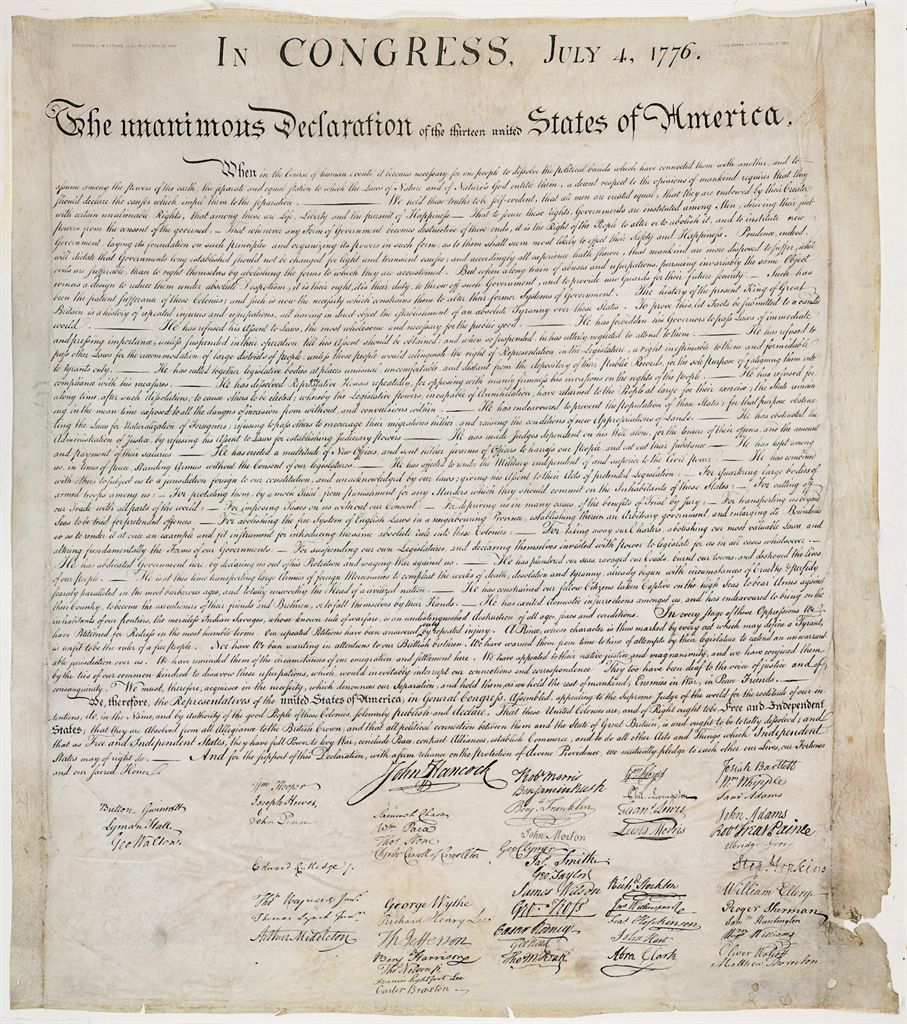
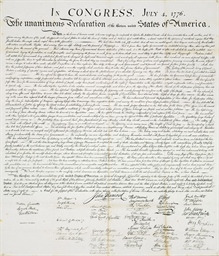
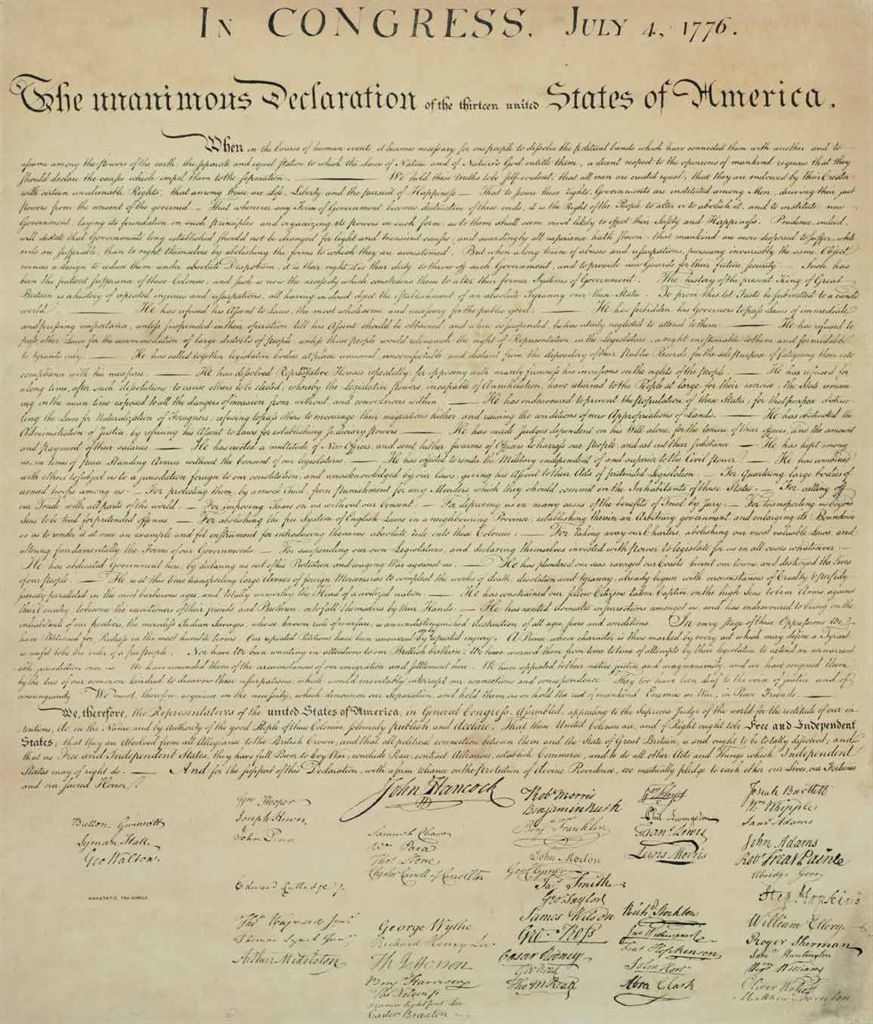
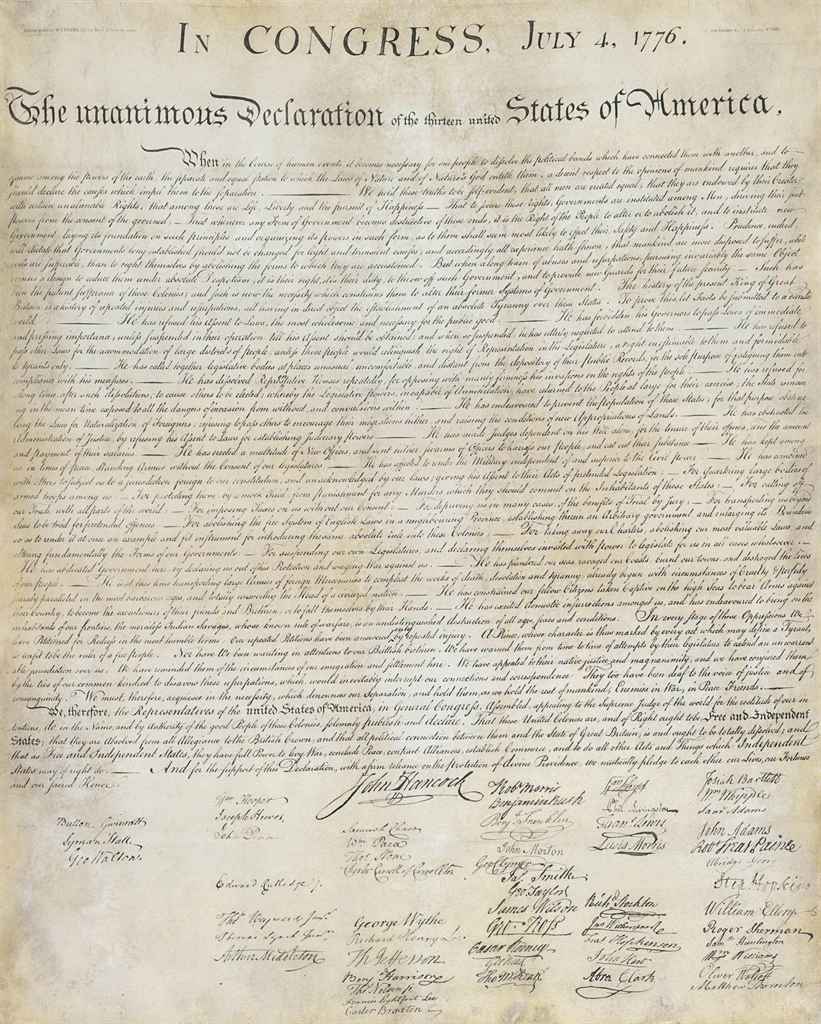
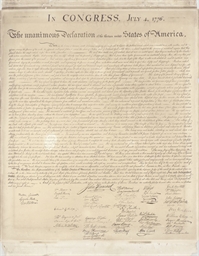
.jpg)
.jpg)
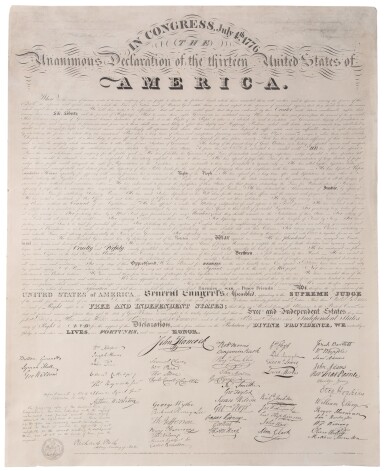

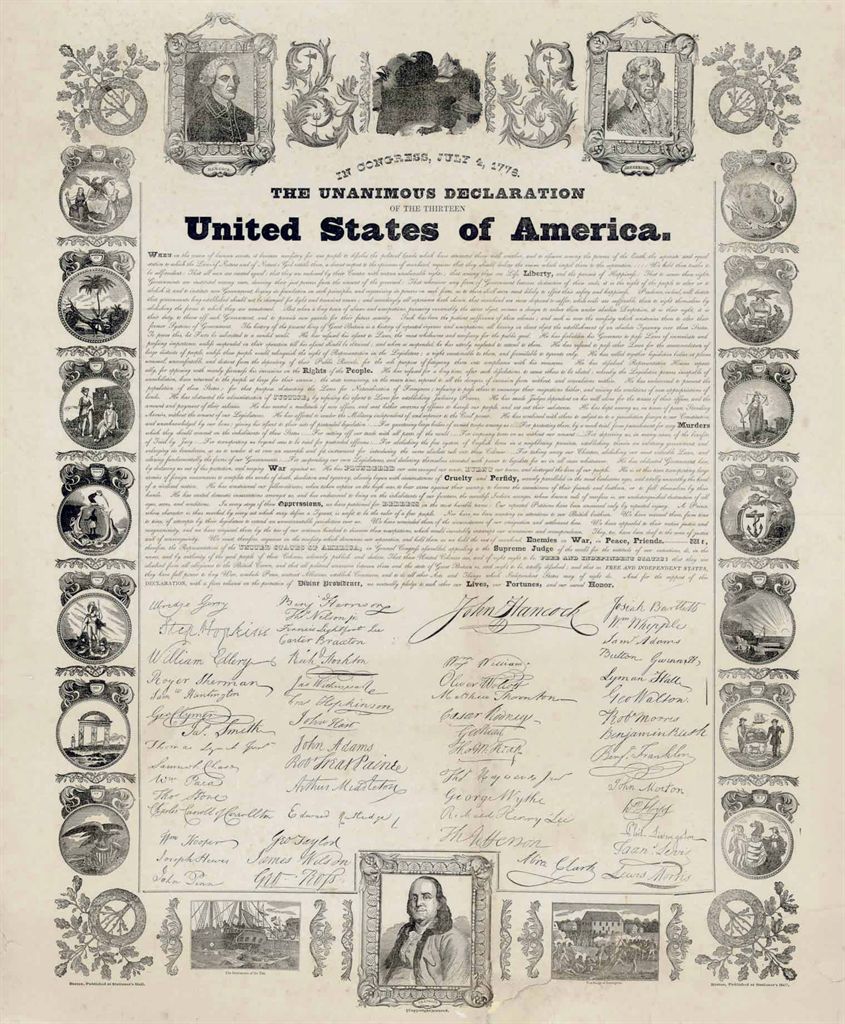
.jpg)
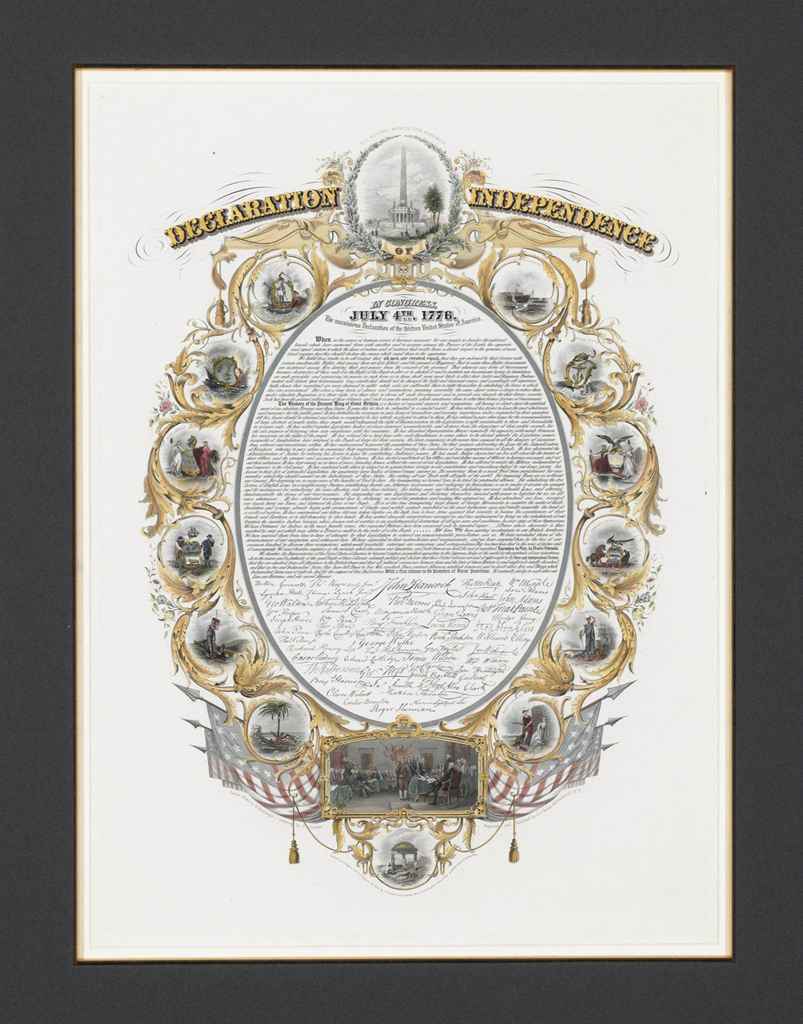

Try LotSearch and its premium features for 7 days - without any costs!
Be notified automatically about new items in upcoming auctions.
Create an alert